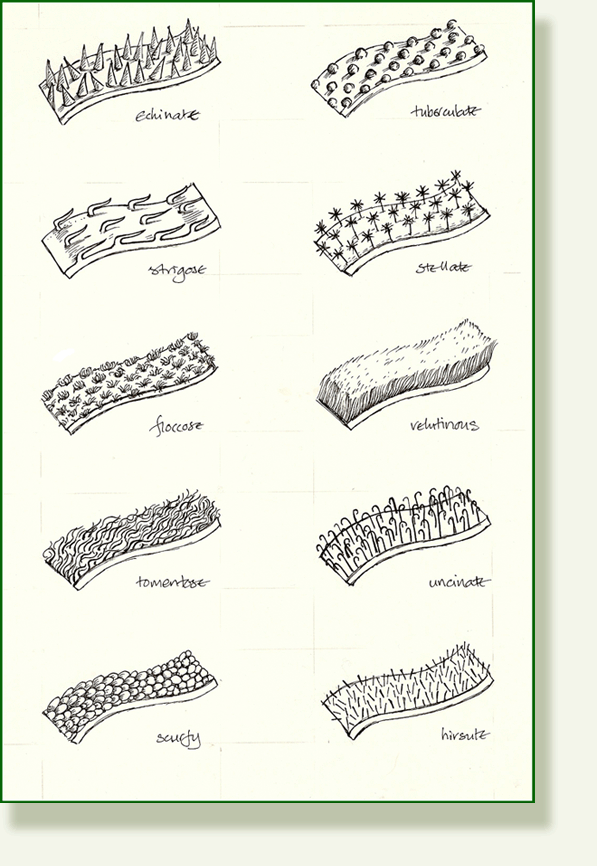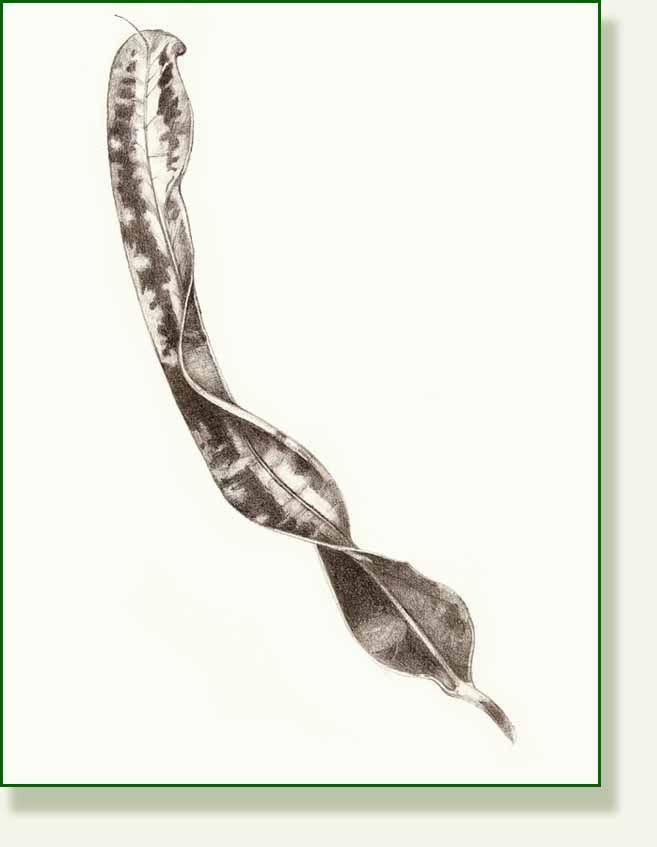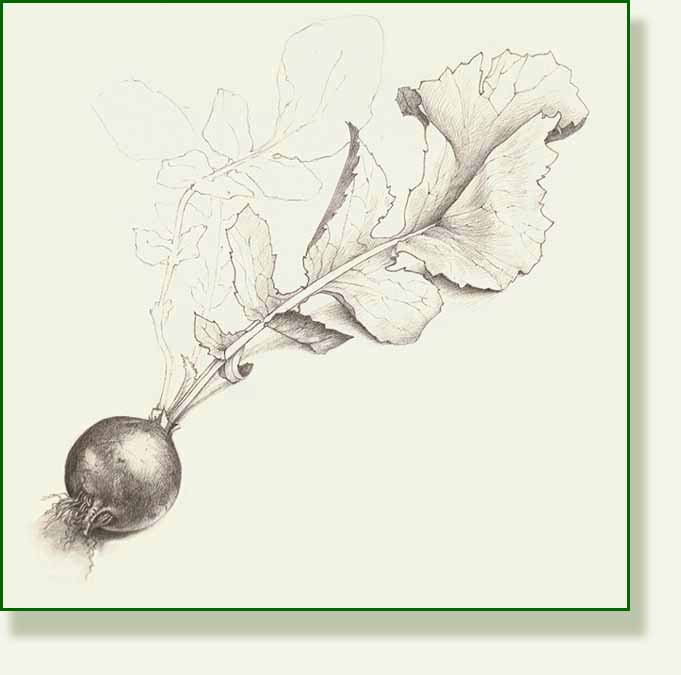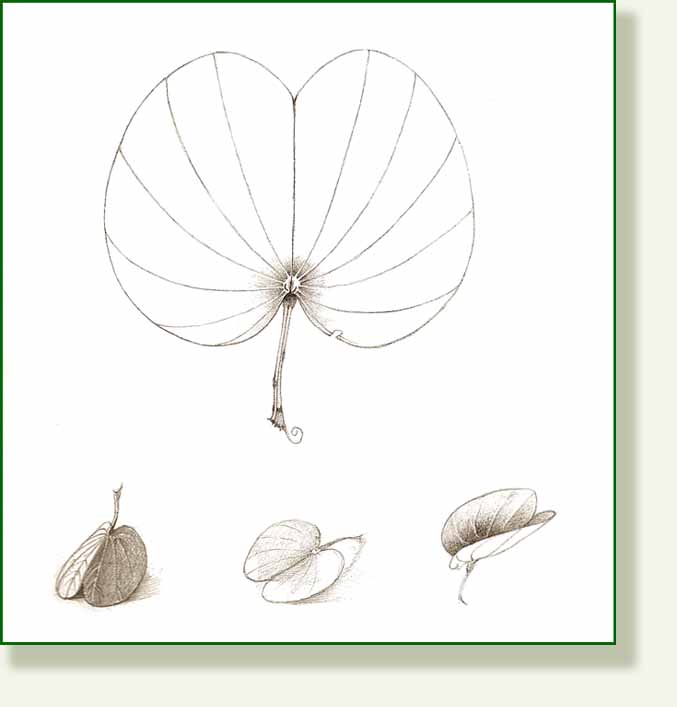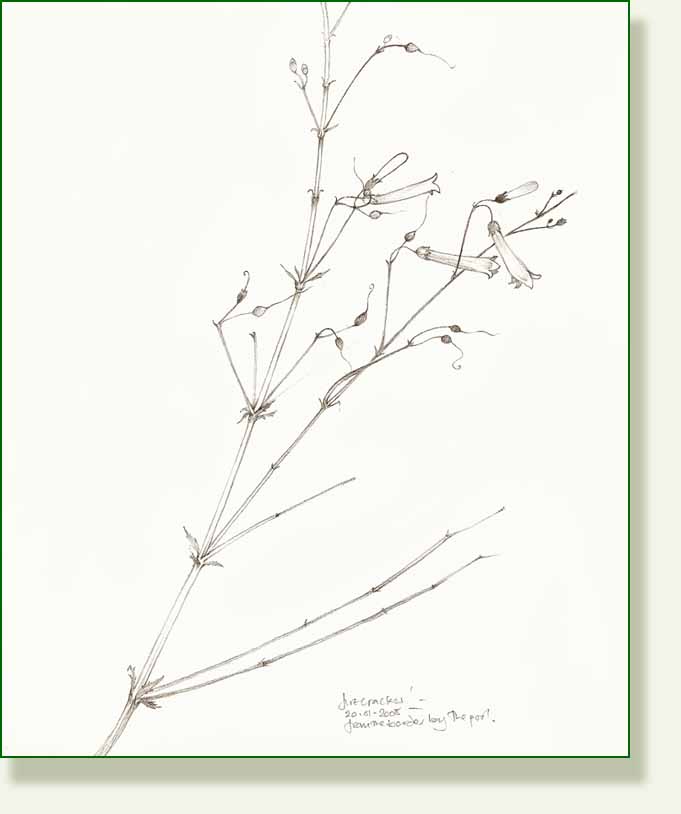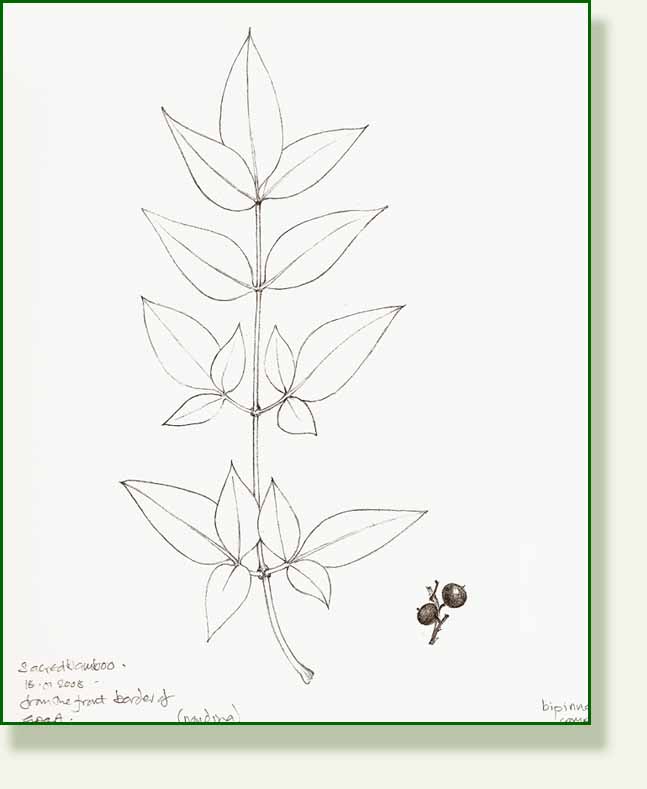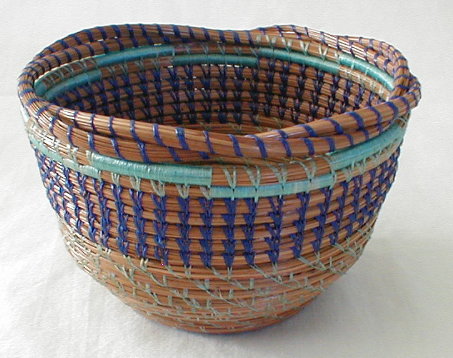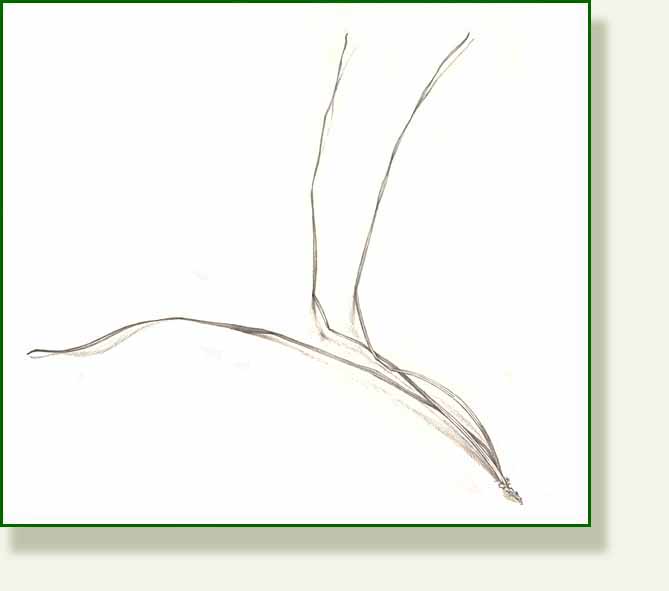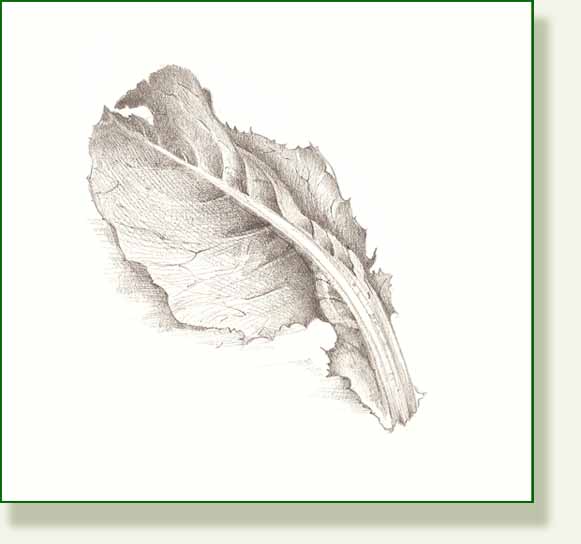I am returning to leaf morphology today so I have ten small drawings of various kinds of hairiness (pubescence to use the correct name) which also give me some more practice with pen and ink. Hairs in botanical terms are, by the way, referred to as trichomes.
You only have to think about leaves to realise that they do all feel different, we describe them as leathery, waxy, prickly, furry.. etc. However, the correct botanical language and names are wonderful, descriptive and Dickensian. I am sure somewhere a character must have been described as having “velutinous” hair. Some are very bizarre, some you can associate with the everyday. “Floccose” is easy for anyone who went to an UK Indian restaurant in the 1970`s to remember. Yes!…that obligatory deep red furry “flocked” wallpaper. Wallpaper is another favourite subject of mine and just out of interest, a flocked wallpaper was made a few years ago that reacted to ambient noise by changing colour, and now Jonas Samson has developed wallpaper that emits light.. very beautiful ..see here
Here are the 10 different types of hairiness from my drawing, there are more!
Echinate… beset with prickles.
Tuberculate… warty or with tubercules
Strigose… with bent over (appressed)spikes
Stellate… with star shaped hairs
Floccose… soft woolly tufts of hair
Velutionous… dense soft silky hair
Tomentose… matted soft woolly hair
Unicanate… hooked points
Scurfy… scale like particles
Hirsute… stiff bristly hairs
The often unnoticed surfaces of things are, of course, brought to our 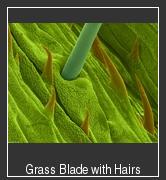 attention through a microscope. Here to illustrate the surface of a leaf is the beautiful image of a blade of grass from David Kunkel’s Microscopic World, at the Astrographics.com website. The images show in wonderful colour and detail another fascinating, and to an artist, inspirational world. See more here. I especially like the “gecko foot/toe hairs”. I have a lovely little gecko who lives in my studio room. Apparently he gets around the ceiling by rolling and unrolling the hairs on his feet! I will regard him with heightened wonder and respect now!
attention through a microscope. Here to illustrate the surface of a leaf is the beautiful image of a blade of grass from David Kunkel’s Microscopic World, at the Astrographics.com website. The images show in wonderful colour and detail another fascinating, and to an artist, inspirational world. See more here. I especially like the “gecko foot/toe hairs”. I have a lovely little gecko who lives in my studio room. Apparently he gets around the ceiling by rolling and unrolling the hairs on his feet! I will regard him with heightened wonder and respect now!
______________________________________________


